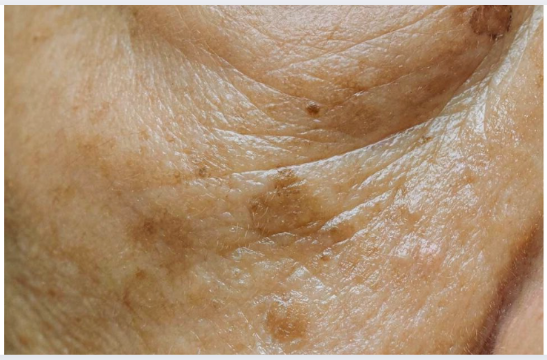Ever notice those flat brown or gray patches that start to appear on your skin—especially if you’ve spent years under the sun? They’re commonly known as age spots, but you might’ve also heard them called liver spots or solar lentigines. While they tend to show up more often after 50, sun lovers of any age can develop them. These spots form when melanin—the pigment that gives our skin its color—starts accumulating more than it should. Over time, factors like too much sun exposure, getting older, and even genetics can speed up this process.
Why Minerals Matter for Skin Health
Minerals may not get as much attention as vitamins, but they’re absolute power players when it comes to keeping our skin healthy. They help your body regenerate skin cells, defend against environmental stress, and keep the skin’s structure strong and resilient. Minerals like zinc, copper, and especially selenium are essential for maintaining that glow from the inside out.
So, What Exactly Is Selenium?
Selenium is a trace mineral, which means your body doesn’t need a lot—but it absolutely needs some. It acts like a microscopic bodyguard, protecting cells from harmful molecules called free radicals that contribute to aging and skin damage. On top of that, selenium supports the immune system and keeps your thyroid functioning properly—both of which play a role in how your skin looks and feels.
Can a Lack of Selenium Lead to Age Spots?
Turns out, yes. When your body runs low on selenium, it becomes more vulnerable to oxidative stress. This leaves your skin open to damage from things like UV rays, which in turn encourages melanin to go into overdrive—resulting in those unwelcome age spots. Making sure you’re getting enough selenium can help keep your skin clear, balanced, and more resistant to sun-related damage.
What the Research Says
Science backs this up. Several studies have shown that selenium offers protective benefits against UV damage and might even reduce the risk of some types of skin cancer. When used alongside other antioxidants, selenium has been shown to improve skin elasticity and lessen the appearance of age spots. In short, it’s a little mineral with a big impact.
Warning Signs of Low Selenium
If your selenium levels are dipping, your body might give you a few clues. You could feel more tired than usual, experience muscle weakness, or find that your immune system isn’t as strong. Skin-wise, it might mean you’re more prone to sunburn, slower to heal from cuts, and more likely to develop those stubborn dark spots. Catching these signs early can help you turn things around before they snowball.
Getting Enough Selenium: What You Should Know
So, how do you make sure you’re getting enough selenium without overdoing it? The average adult needs about 55 micrograms per day, and the best way to hit that target is through a varied, nutrient-rich diet. Tracking what you eat and considering supplements—if needed—can go a long way toward keeping your levels in check.
Selenium-Rich Foods to Add to Your Plate
Some of the best natural sources of selenium include:
- Brazil nuts (just one or two a day can do the trick!)
- Seafood like tuna, sardines, and halibut
- Organ meats, especially liver
- Eggs, sunflower seeds, and whole grains
Mixing these into your meals can give your body a selenium boost without needing to rely on supplements.
Should You Consider Selenium Supplements?
If you’re falling short on selenium through food alone, supplements can help—but it’s important not to go overboard. Too much selenium can cause side effects like nausea, hair loss, and even nerve issues. That’s why it’s always smart to talk with your doctor before adding any new supplement to your routine.
Other Ways to Keep Age Spots at Bay
Of course, selenium is just one piece of the puzzle. To really protect your skin, consider building these habits into your daily life:
- Wear sunscreen—even on cloudy days
- Limit your time in direct sunlight, especially midday
- Opt for clothing that shields your skin
- Eat a diet rich in antioxidants
- Stay hydrated and stick to a gentle skincare routine
Wrapping It Up: Selenium’s Role in Radiant, Spot-Free Skin
In the grand scheme of skincare, selenium might not be the first thing that comes to mind—but it absolutely deserves a spot in the conversation. This trace mineral helps your skin defend itself from aging and sun damage, reducing the chance of age spots and keeping your complexion looking fresh. By fueling your body with selenium-rich foods and embracing a few simple sun-safe habits, you’ll be setting your skin up for long-term health—and maybe even turning back the clock a bit.

